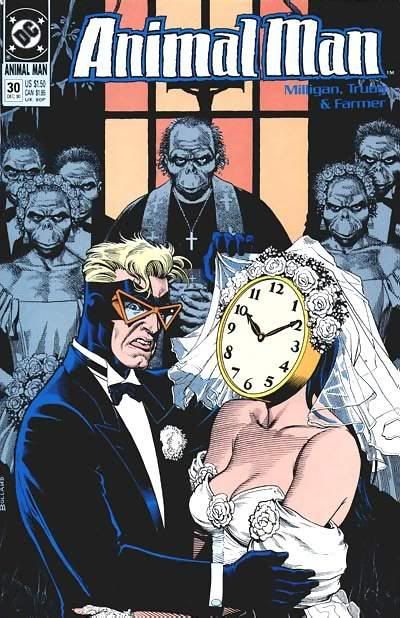CTG Horror Month: Grant Morrison's Animal Man

Animal Man is an uninteresting superhero. The character does not offer a whole lot to those interested in him. It is up to the writer of the character to make a stand, and flesh out the backstory of the B-list hero. The first writer to take a substantial leap with the character was Grant Morrison. The hero works in an extremely limited context that the British writer nailed down to the core. Baker is an average Husband and father to wife Linda Baker and two kids Clifford and Maxine. He is one of the few married superheroes in the DC Universe. When writers go to the character, there is an impossible urge to destroy the dynamics of the family. Morrison’s run is built around the idea, the punchline of the entire series is a big apology to the character and his universe. Nothing is average in one of the first books to really change the landscapes of comic books. Many classic films begin to toy with the very nature of reality that inspires the direction of this comic. Rashomon directed by Kurosawa in 1951 asks viewers what is real, without ever revealing the true answer. While this run is slightly more direct than the strange piece of film, it did serve to move comics towards catching up with the modern narrative techniques of film. The title proved that just because a comic book has capes and tights, does not mean it cannot take the reader seriously.

Animal Man by Morrison has defeated the notion of writer’s writing themselves into the series, because nobody will base their whole story around such a fantastical notion the transcends reality in such an enticing manner. FF #10 recently broke the golden rule in unsatisfactory way. If a writer is going to take the approach going forward, they are competing against one of the modern masters. The Psycho Pirate echoes all of the greatness that readers need to know about this series. The character was one of the most interesting headcases that readers are likely going to find amongst DC proper. He lingered in the background of many stories, showcasing almost everything the comic was about. The character simply did not want to get erased from continuity yet again. While the publisher was supposed to bring the odd pirate back from his grave, they merely dusted him off from the pages of Superman from the New 52 and threw him back in. The tale from Morrison still exemplifies the cyclical nature of the medium and that nothing can truly last forever.

For an instantaneous sense of the incredible nature of this Animal Man run take a look at the covers by Brian Bolland. They are so strikingly weird, but evoke such a lovely sense of curiosity that will spark limitless imagination. 24 is a personal favorite of mine that sparked some of the conversation above and adds to the cohesive nature to the run. 30 is an example of a piece that needs to be seen in order to be properly comprehend. The images are a testament to the sparklingly ambitious narrative structures present in the run.

The art team of Chas Truog and Doug Hazlewood bring a dramatic sense of irony to the tale present. The art is wonderfully clear, yet it has an older style that will intrigue the mind. The irony is reached through classically rendered superhero fare, paired with some of the most subversive writing ever published. Many will not quite know what to make of this art, until they can properly digest it within the context of the story. The odd fit blends together well, and makes the series truly amazing.

One could distill Morrison’s run on Animal Man as a horror comic book, but that would cutting the scope of the series short. The character of Buddy Baker went to hell and back, he literally reached the end of the universe and visited the deceased heroes of old. This is a title that must be embraced by fans of the medium in general. This October settle into one of the most thrilling comic books ever published.
Comments
- kanchilr1's blog


